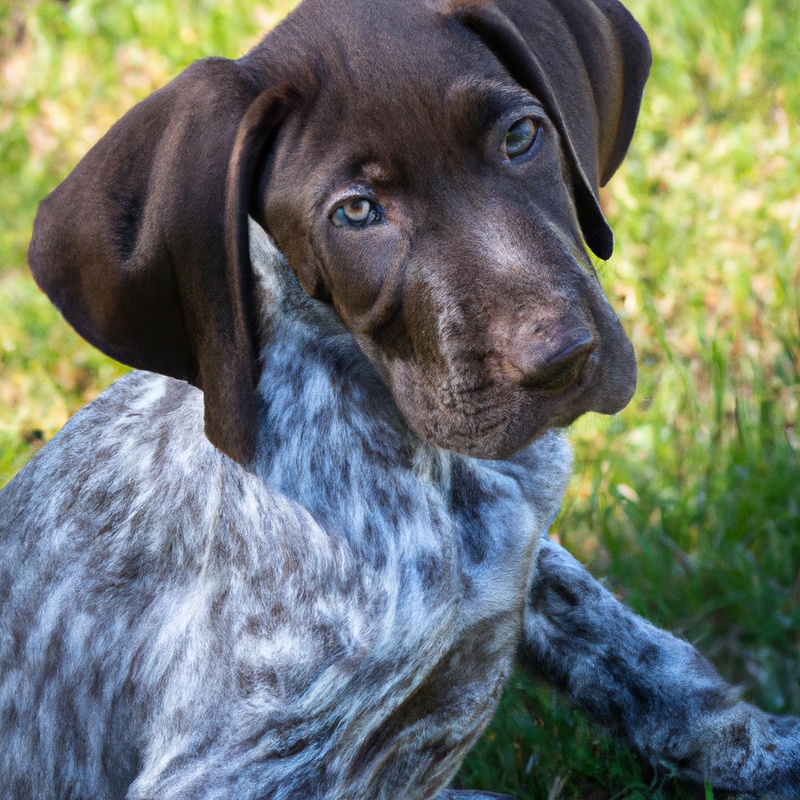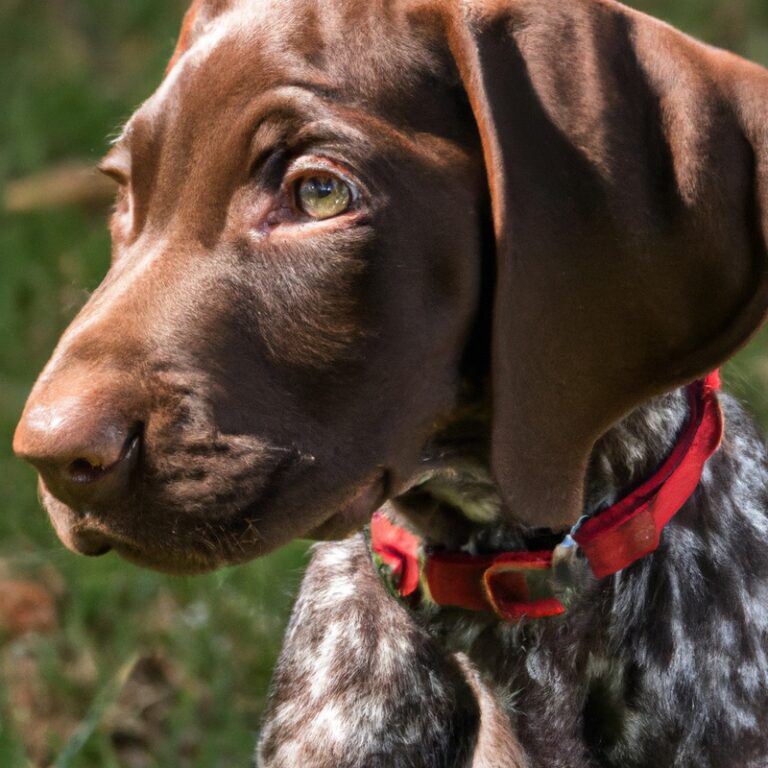How Do I Prevent My German Shorthaired Pointer From Chasing Wildlife While Hiking?
Key Takeaways:
- Implement consistent training and reinforcement to teach your German Shorthaired Pointer proper recall and obedience commands.
- Utilize positive reinforcement techniques and rewards to redirect your dog’s focus away from wildlife and towards you during hikes.
- Leash your dog while hiking in wildlife-rich areas to prevent them from chasing or disturbing the local animals.
- Consider using deterrents such as noise-making devices or natural repellents to discourage your dog from chasing wildlife during outdoor activities.
Are you an outdoor enthusiast who loves hiking with your German Shorthaired Pointer? While exploring nature together can be exhilarating, one concern that often lingers in the back of our minds is how to prevent our furry companion from chasing wildlife.
As an expert dog trainer with a passion for preserving the balance of the natural world, I understand the instincts behind your dog’s behavior and the importance of preventing wildlife chasing for their safety and conservation efforts.
Join me as we explore effective training techniques, environmental management strategies, and responsible hiking practices to ensure a fulfilling and harmonious experience for both you and your four-legged adventurer. Get ready to enjoy nature without the worry!
| Problem | Solution |
| 1. Prey drive | Train your dog to have a reliable recall, use leash, use a long line, or use a GPS tracker |
| 2. High energy | Provide sufficient exercise before hiking, mental stimulation, and carry treats or toys to redirect attention |
| 3. Environmental enrichment | Allow your dog to explore controlled environments or designated areas where wildlife is less likely present |
| 4. Positive reinforcement | Reward your dog for good behavior and redirect them when they show interest in wildlife |
| 5. Professional help | Consult a professional dog trainer or behaviorist for guidance and support |
Understanding the Instincts of a German Shorthaired Pointer
The Natural Hunting Instincts of German Shorthaired Pointers
German Shorthaired Pointers have a strong instinct for hunting. It’s in their genes! These dogs were bred for hunting and have a natural drive to chase and retrieve prey.
Their instinct is to track and flush out game, making them excellent hunting companions.
You can’t completely eliminate their hunting instincts, but you can redirect their focus. Training and socializing your German Shorthaired Pointer from a young age is key.
Be consistent and provide mental and physical stimulation to keep them engaged.
Channel their hunting instincts through activities like obedience training, tracking exercises, and playing interactive games. By understanding and working with their natural instincts, you can ensure a happy and well-rounded furry friend.
Why it’s Important to Prevent Chasing Wildlife During Hiking
When you’re out hiking with your German Shorthaired Pointer, it’s important to prevent them from chasing wildlife. Why?
Well, first and foremost, it’s for the safety of the wildlife itself.
Chasing animals can cause stress and harm, especially if they are startled or injured in the process. Additionally, chasing wildlife can lead to ecological disruptions in the natural habitats that we are exploring.
It’s our responsibility as pet owners and nature enthusiasts to respect and preserve the balance of the ecosystem.
So, let’s make sure we prevent our furry friends from chasing after wildlife while hiking!
Training Techniques to Prevent Chasing Wildlife
Teaching and Reinforcing the “Leave It” Command
Teaching and reinforcing the “Leave It” command is essential for preventing your German Shorthaired Pointer from chasing wildlife while hiking. So, first and foremost, you’ll want to make sure your dog understands what “Leave It” means.
Start by holding a treat in your closed hand and saying “Leave It.” When your dog stops trying to get the treat, reward them with a different treat or praise.
Repeat this exercise regularly, gradually introducing distractions like toys or food on the ground. Remember to always reward your dog for responding correctly to the command.
Consistency and positive reinforcement are key to reinforcing the “Leave It” command.

Using Distractions and Rewards during Training Sessions
Using distractions and rewards during training sessions is a key technique to prevent your German Shorthaired Pointer from chasing wildlife while hiking. Instead of allowing your dog to focus on the enticing wildlife, you can redirect their attention by introducing distractions.
These could be toys, treats, or even other commands that engage their focus.
By doing so, you shift their attention away from the wildlife and onto the reward or distraction. This can help reinforce positive behavior and discourage chasing.
Remember to consistently reward good behavior to strengthen the desired response and discourage unwanted behavior.

Practicing Recall Training in Controlled Environments
Practicing recall training in controlled environments is an essential aspect of preventing your German Shorthaired Pointer from chasing wildlife. First and foremost, it’s crucial to start recall training in a secure and controlled space, such as your backyard or a fenced-off area.
This ensures your dog’s safety and reduces distractions.
Begin by teaching your dog a reliable recall command, like “come” or “here.” Use positive reinforcement techniques, such as treats or praise, to reward your dog when they respond to the recall command. Gradually increase the difficulty of the controlled environments, introducing distractions such as toys or other animals.
This helps your dog learn to focus on you even in tempting situations.
Practice recall training regularly to reinforce the behavior and ensure that your dog continues to respond reliably, both indoors and outdoors.

Implementing Positive Reinforcement and Consistency in Training
Implementing positive reinforcement and consistency in training is key when it comes to preventing your German Shorthaired Pointer from chasing wildlife while hiking. First and foremost, positive reinforcement involves rewarding your dog for desirable behaviors.
For example, when your dog listens to your command to stay or come, you can provide treats or praise as a reward.
This teaches your dog that obeying your commands leads to positive outcomes. Consistency is also crucial in training.
Make sure to consistently enforce the rules and commands you have established.
This means using the same commands and rewards every time. Avoid confusing your dog by using different cues or punishment methods.
Consistency helps your dog understand what behaviors are expected and reinforces their training.
By incorporating positive reinforcement and consistency in your training sessions, you can teach your German Shorthaired Pointer to associate positive experiences and rewards with obeying your commands, discouraging them from chasing wildlife while hiking.
Managing the Environment to Deter Wildlife Chasing
Choosing Appropriate Hiking Trails and Locations
Choosing appropriate hiking trails and locations is essential for preventing your German Shorthaired Pointer from chasing wildlife while hiking. First and foremost, consider the environment and terrain of the trail.
Opt for trails that are less prone to encounters with wildlife, such as urban parks or well-maintained trails away from nature reserves.
Furthermore, it is crucial to research and select trails that have specific regulations in place to protect wildlife, such as leash requirements or designated dog-free areas. These regulations help to ensure a safe and controlled environment for both your dog and the wildlife.
Additionally, try to avoid trails that pass through areas with high wildlife activity or nesting grounds.
This will minimize the risk of your dog getting excited and chasing after wildlife.
Keeping Your German Shorthaired Pointer on a Leash
Keeping your German Shorthaired Pointer on a leash is essential when hiking to prevent them from chasing wildlife. By keeping them tethered, you have better control and can ensure their safety as well as that of the surrounding environment.
Plus, it helps to maintain respect for wildlife and their habitats.
Make sure to use a sturdy leash and keep a firm grip on it throughout your hike. This way, you can enjoy the outdoors with your furry friend while minimizing any negative impact on the wildlife you encounter.
Utilizing Long Lines or Flexi-Leads for Added Control
When it comes to preventing your German Shorthaired Pointer from chasing wildlife while hiking, utilizing long lines or flexi-leads can be a great way to have added control over your dog. These tools allow you to give your dog more freedom to explore while still keeping them within your reach.
By using a long line, which is essentially a very long leash, you can give your dog more space to roam without compromising their safety or the well-being of wildlife.
You can easily control their movements and prevent them from chasing or bothering animals by simply reeling in the line when necessary. On the other hand, flexi-leads are retractable leashes that offer a similar degree of control.
They give your dog more freedom to move around while still allowing you to quickly reel them back in if they start to chase anything.
Whether you choose a long line or a flexi-lead, using these tools can provide you with the added control you need to prevent your German Shorthaired Pointer from chasing wildlife while enjoying your hikes together.
Avoiding Areas with High Wildlife Presence
Avoiding areas with high wildlife presence is one of the key steps to prevent your German Shorthaired Pointer from chasing wildlife while hiking. First and foremost, it’s important to research and gather information about the specific trails or areas you plan to visit.
Look for any reports or signs indicating the presence of wildlife in those areas.
Additionally, you can reach out to local conservation organizations, national parks, or wildlife management agencies for guidance. They can provide valuable insights and recommendations on areas to avoid or ones where encounters with wildlife are less likely.
Being aware of the seasonal patterns and habitats of different wildlife species can also help you plan your hiking routes accordingly.
For example, if you know that an area is known to have a high density of deer during a certain time of year, it’s best to steer clear of that area during that period.
Mental and Physical Stimulation for German Shorthaired Pointers
Providing Sufficient Exercise Before Hiking
Before going on a hike with your German Shorthaired Pointer, it is important to make sure they have had enough exercise. This is crucial for their physical and mental well-being.
A tired dog is less likely to chase wildlife and more likely to obey commands.
Start by incorporating daily exercise into your routine. Take your dog for long walks, runs, or play fetch with them.
Mental stimulation is also important, so consider puzzle toys or obedience training sessions.
By providing enough exercise and mental stimulation, your German Shorthaired Pointer will be calmer and more focused during hikes, reducing the chances of them chasing wildlife.
Engaging in Interactive Play and Training Sessions
Engaging in interactive play and training sessions is essential for preventing your German Shorthaired Pointer from chasing wildlife while hiking. It helps redirect their energy and focus, keeping them mentally and physically stimulated.
During play sessions, use interactive toys like squeaky balls or flying discs to engage their hunting instincts in a controlled manner.
Incorporate obedience training commands like “drop it” or “leave it” to teach them to let go of the prey drive. Training sessions should focus on recall commands such as “come” and “stay” to ensure they listen and respond in distracting outdoor environments.
Use positive reinforcement, like treats or praises, to reward their good behavior.
Consistency in training is key to reinforcing positive habits and keeping their attention on you rather than wildlife. So, remember to have fun, be patient, and make training sessions enjoyable for both you and your furry companion.
Incorporating Mental Stimulation Toys and Games
Incorporating mental stimulation toys and games is a great way to keep your German Shorthaired Pointer engaged and prevent them from chasing wildlife while hiking. There are several options you can try:
- Puzzle toys: These toys challenge your dog’s problem-solving skills and keep them mentally stimulated. Look for interactive toys that require your dog to figure out how to get treats or toys out of them. This will keep them occupied and focused on the toy instead of the wildlife.
- Interactive games: Engage your German Shorthaired Pointer in interactive games like hide-and-seek or find-the-treat. These games not only provide mental stimulation but also strengthen the bond between you and your dog.
- Scent games: Dogs have an incredible sense of smell, so engaging them in scent games can be mentally stimulating. Hide treats or toys in different locations and encourage them to find them using their sense of smell. This will redirect their focus and keep them entertained during the hike.
Remember to choose toys and games that are safe and appropriate for your dog’s size and age. Regularly rotate the toys to keep things fresh and exciting for your German Shorthaired Pointer.
With these mental stimulation activities, you’ll have a happier and more focused pup on your hikes.
Additional Tips for Preventing Wildlife Chasing
Utilizing Deterrents to Discourage Wildlife Encounters
Utilizing deterrents can be an effective way to discourage wildlife encounters while hiking with your German Shorthaired Pointer. Here are some options to consider:
- Make some noise: Attach a bell or noise-making device to your dog’s collar. The sound will alert wildlife to your presence, giving them a chance to move away.
- Use visual aids: Carry a brightly colored leash or bandana to make your dog more visible to wildlife. Animals may be less likely to approach if they can easily spot your pet.
- Get a bear bell: These bells can be attached to your backpack or your dog’s harness, creating constant noise as you move. The jingling sound can help deter animals from coming too close.
- Consider dog-safe repellents: Some products are specifically designed to repel wildlife. Look for non-toxic options, such as citronella-based sprays or repellent discs, that won’t harm your dog or the environment.
Seeking Professional Help from Dog Trainers or Behaviorists
If you’re struggling with your German Shorthaired Pointer’s wildlife chasing behavior while hiking, seeking professional help from dog trainers or behaviorists can be a game-changer. These experts have the knowledge and experience to assess your dog’s behavior, identify the underlying causes, and provide you with effective training techniques and strategies.
They can help you understand why your dog is compelled to chase wildlife and teach you how to redirect their focus and reinforce positive behaviors.
Taking this step can make a world of difference in preventing wildlife chasing and ensuring a safe and enjoyable hiking experience for both you and your pup.
Socializing and Exposing German Shorthaired Pointers to Different Environments
When it comes to preventing your German Shorthaired Pointer from chasing wildlife while hiking, socializing and exposing them to different environments is key. By introducing your dog to various people, animals, and surroundings from a young age, you can help them become more confident and less reactive towards wildlife.
Take your pup on walks in different areas, visit dog-friendly parks, and arrange playdates with other dogs to expose them to new experiences.
This will help them learn appropriate behavior and decrease their instinct to chase wildlife.
Monitoring and Managing Energy Levels of Your Dog
Monitoring and managing the energy levels of your German Shorthaired Pointer is an important aspect of preventing them from chasing wildlife while hiking. By understanding and controlling their energy, you can reduce the chances of impulsive and reactive behavior.
First and foremost, regular exercise is key.
Engage your dog in daily physical activities like walks, runs, or games of fetch to help burn off excess energy. Mental stimulation, such as training sessions or puzzle toys, can also tire them out mentally.
Keep an eye on your dog’s body language and behavior during hikes.
If you notice signs of restlessness, intense sniffing, or a fixated gaze, it may indicate heightened energy levels. Take regular breaks and allow your dog to calm down before continuing the hike.
Proper nutrition plays a role too.
Feeding a balanced diet and avoiding excessive treats can help prevent excess energy spikes. Consult with your veterinarian to determine the appropriate diet and feeding schedule for your dog’s specific needs.
Lastly, establish a calm and consistent routine at home.
Dogs thrive on structure, so providing them with a predictable daily routine can help manage their energy levels. Ensure they get sufficient rest and sleep to avoid restlessness and hyperactivity.
By monitoring and managing your German Shorthaired Pointer’s energy levels through exercise, mental stimulation, nutrition, and routine, you can minimize the likelihood of them chasing wildlife while hiking and create a more enjoyable experience for both of you.
Responsible Hiking Practices to Protect Wildlife
Adhering to Local Laws and Regulations
Adhering to local laws and regulations is a crucial aspect of responsible hiking. First and foremost, it’s important to familiarize yourself with the specific rules and regulations of the area where you’ll be hiking.
This includes understanding any leash laws or restrictions on pets, as well as any specific guidelines for wildlife protection.
Some common regulations you may come across include keeping your dog on a leash at all times, staying on designated trails, and respecting any closures or restricted areas. These rules are there to protect both you and the wildlife in the area, so it’s important to follow them.
By adhering to local laws and regulations, you can help maintain the delicate balance of nature and ensure a positive hiking experience for everyone involved.
Respecting Wildlife and their Habitats
Respecting wildlife and their habitats is essential when enjoying the outdoors. First and foremost, remember to observe from a distance.
Getting too close can disrupt their natural behavior and potentially put them in danger.
Keep your voice low and movements slow to minimize your impact. Another important aspect is to avoid feeding or approaching wild animals.
They have specific diets and feeding them human food can be harmful to their health.
Additionally, feeding them can make them dependent on humans and disrupt their natural foraging habits. Be mindful of the environment as well.
Stay on designated trails to avoid trampling on fragile plants and disturbing nesting areas.
Avoid taking anything from nature, such as rocks or flowers, as it disrupts the ecosystem. Lastly, dispose of your waste properly.
Carry out all trash, including food wrappers and cigarette butts, to prevent wildlife from accidentally ingesting harmful materials.
By respecting wildlife and their habitats, we can ensure the preservation and well-being of these incredible creatures for future generations to enjoy.
Educating Fellow Hikers about Wildlife Conservation
Educating fellow hikers about wildlife conservation is essential for protecting our natural environment and the animals that call it home. So, let’s dive in and discuss a few effective ways to spread awareness and knowledge among our hiking community.
One of the simplest but impactful ways to educate fellow hikers is through conversation.
Strike up a friendly chat while on the trail and share interesting facts about the local wildlife and their habitats. Encourage others to respect and appreciate nature, highlighting the importance of preserving it for future generations.
Another great idea is to distribute educational materials.
Consider creating informative pamphlets or flyers that highlight key conservation practices, such as staying on designated trails and avoiding littering. You can even include suggestions for wildlife-friendly behavior, like keeping a safe distance from animals and refraining from feeding them.
Harness the power of social media! Share captivating photos and educational posts about wildlife conservation on your social platforms.
Tag fellow hikers, use relevant hashtags, and engage with the hiking community online. This way, you can reach a wider audience and inspire others to become advocates for wildlife protection.
Lastly, organize educational events or talks about wildlife conservation.
Collaborate with local environmental organizations, experts, or park rangers to host workshops or presentations. By providing a platform for knowledge-sharing, you can help raise awareness about the impact of human activities on wildlife and foster a sense of responsibility among fellow hikers.
Final Verdict
Understanding the instincts of your German Shorthaired Pointer and implementing effective training techniques are crucial in preventing them from chasing wildlife while hiking. By teaching and reinforcing commands like “leave it,” utilizing distractions and rewards during training, and practicing recall training in controlled environments, you can establish control and redirect their focus.
Managing the environment through leash usage, choosing appropriate hiking trails, and avoiding areas with high wildlife presence also play a significant role.
Providing mental and physical stimulation, utilizing deterrents, seeking professional help if needed, and practicing responsible hiking practices will further reinforce your commitment to preventing wildlife chasing. Overall, by implementing these strategies, you can ensure a safe and enjoyable hiking experience for both you and your German Shorthaired Pointer, while also demonstrating your dedication to wildlife conservation.








